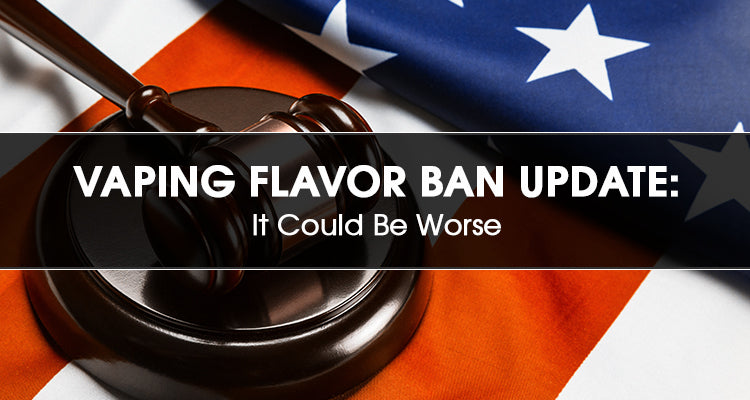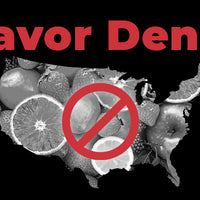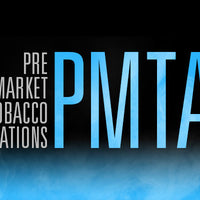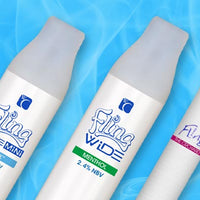With the recent outbreak of vaping-related illnesses and continued concerns over youth vaping, the Trump Administration and the FDA were set to ban all flavored electronic cigarettes in October 2019. The vaping industry waited on pins and needles, but the announcement never came.
Now, after months of anticipating a full flavor ban that could possibly shut down hundreds of vape shops and small vape companies across the nation, the FDA’s release of its Final Guidance for the regulation of electronic cigarettes brings a small sigh of relief to the vaping industry.
FDA E-Cig Flavor Ban Not as Bad as it Could Be

On January 2, 2020, the FDA released its Final Guidance for the regulation of electronic cigarettes. The guidance opens with an introduction to what’s included in the 53-page document, along with background information regarding the FDA’s authority to regulate tobacco products and a timeline of revisions to the FDA’s original Deeming Regulations of 2016.
According to the guidance, the FDA’s authority to regulate the manufacturing, marketing and distribution of tobacco products falls under the Tobacco Control Act of 2009. Additionally, the act also granted the agency the authority to “issue regulations deeming other products that meet the statutory definition of tobacco product” – hence the release of the FDA’s Deeming Regulations in May of 2016.
Within the guidance, the FDA has established specific terms with regards to its regulatory enforcement of electronic cigarettes, including:
Cartridge-based ENDS products – a type of ENDS product that consists of, includes, or involves a cartridge or pod that holds liquid that is to be aerosolized through product use. For purposes of this definition, a cartridge or pod is any small, enclosed unit (sealed or unsealed) designed to fit within or operate as part of an electronic nicotine delivery system. An example of products that would not be captured by this definition include completely self-contained, disposable products.
Electronic nicotine delivery systems (or ENDS) – include devices, components, and/or parts that deliver aerosolized e-liquid when inhaled. For example, FDA considers vapes or vape pens, personal vaporizers, e-cigarettes, cigalikes, e-pens, e-hookahs, e-cigars, and e-pipes to be ENDS.
E-liquids – a type of ENDS product and generally refer to liquid nicotine and nicotine-containing e-liquids (i.e., liquid nicotine combined with colorings, flavorings, and/or other ingredients). Liquids that do not contain nicotine or other material made or derived from tobacco, but that are intended or reasonably expected to be used with or for the human consumption of a tobacco product, may be components or parts and, therefore, subject to FDA’s tobacco control authorities.
Label – refers to the display of written, printed, or graphic matter upon the immediate container of any article as part of Section 201(k) of the FD&C Act.
Labeling – means all labels and other written, printed, or graphic matter (1) upon any article or any of its containers or wrappers, or (2) accompanying such article, as part of Section 201(m) of the FD&C Act.
New tobacco product – means (1) any tobacco product (including those products in test markets) that was not commercially marketed in the United States as of February 15, 2007; or (2) any modification (including a change in design, any component, any part, or any constituent, including a smoke constituent, or in the content, delivery or form of nicotine, or any other additive or ingredient) of a tobacco product where the modified product was commercially marketed in the United States after February 15, 2007, as part of Section 910(a) of the FD&C Act.
Tobacco product – any product made or derived from tobacco that is intended for human consumption, including any component, part, or accessory of a tobacco product (except for raw materials other than tobacco used in manufacturing a component, part, or accessory of a tobacco product). The term “tobacco product” does not mean an article that under the FD&C Act is a drug (section 201(g)(1) (21 U.S.C 321(g)(1))), a device (section 201(h)), or a combination product (section 503(g) (21 U.S.C 353(g))). Section 201(rr) of the FD&C Act.
Youth Vaping and Flavor Concerns Drive FDA Regulations

The majority of the FDA’s Final Guidance addresses the concerns over youth vaping based on surveys conducted over the past few years, including the National Youth Tobacco Survey (NYTS) and Monitoring the Future (MTF), as well as comments submitted by the public in response to the March 2019 Draft Guidance.
According to the guidance, data compiled from the surveys suggests that youth vaping more than doubled among high school and middle school students from 2017 to 2019, while the claim that electronic cigarettes provide a gateway to combustible cigarettes for youth also remains.
The surveys also show that youth tend to prefer fruit and mint-based flavors rather than tobacco (yet electronic cigarettes are a gateway to smoking tobacco… 🤔) and that the majority use the smaller “pod”-based systems such as those manufactured by JUUL as they resemble a flash drive and are easier to conceal, unlike the larger open-tank devices.
Within the document, the FDA noted that the agency believes this policy “strikes an appropriate balance between restricting youth access to ENDS products and maintaining availability of potentially less harmful options for current and former adult smokers who have transitioned or wish to transition completely away from combusted tobacco products.”
In the meantime, the legal age to purchase tobacco products, including electronic cigarettes, was raised to 21 nationwide with Trump’s signing of a $1.4 trillion spending package on December 20, 2019. The provision is yet another effort to curb youth vaping, which does make it easier for vape companies to avoid violating the age restriction, as opposed to keeping up with the ever-changing individual state laws and the Tobacco 21 Campaign. The new legal age to purchase tobacco products will take effect in the summer of 2020.
While much of the FDA’s guidance is focused on the issues of youth vaping, only about half a page addresses the more than 2,000 reported cases of vaping-related illnesses, stating that in “working closely with other federal and state agencies, the FDA has not been able to determine the cause of the outbreak.”
But the guidance also notes that “it appears that most of the patients impacted by these illnesses reported using THC-containing products, with evidence suggesting that additive agents, specifically Vitamin E, may play a causative role” and went on to note that many of the cases have involved individuals who have reported using multiple products, including some with nicotine and that the different substances and sources are still under investigation.
What Does the FDA’s Final Guidance Mean for Vapers?

For vapers, the FDA’s Final Guidance is both good news and bad news. Rather than go for a full flavor ban requiring the removal of all flavored vaping products from the market as anticipated, the FDA has instead narrowed it down to small pod-based systems based on their popularity with youth, such as those manufactured by JUUL.
According to the guidance, the FDA intends to prioritize its enforcement of the premarket review requirements for ENDS products within 30 days after issuing its Final Guidance on January 2, 2020, to include:
- Any flavored, cartridge-based ENDS product (other than a tobacco- or menthol-flavored ENDS product);
- All other ENDS products for which the manufacturer has failed to take (or is failing to take) adequate measures to prevent minors’ access; and
- Any ENDS product that is targeted to minors or whose marketing is likely to promote use of ENDS by minors.
This means as of February 6, 2020, adults will still be able to purchase and vape flavors in bottled e-liquids for open-tank systems as well as disposable electronic cigarettes, as noted in the guidance: “An example of products that would not be captured by this definition include completely self-contained, disposable products.”
However, this also means that any flavored product that does meet the definition above will become illegal without the submission of a premarket tobacco application (PMTA).
What’s the Deadline for Vape Companies to Submit PMTAs?
Currently, the final deadline for premarket tobacco applications is May 12, 2020, as opposed to the revised date of August 8, 2022 included with the August 2017 Compliance Policy, the FDA’s revised comprehensive plan for tobacco and nicotine regulations announced in July 2017.
In March 2018, the August 2017 Compliance Policy was challenged in the U.S. District Court for the District of Maryland by several public health groups, and on May 15, 2019, the court issued an order to vacate the guidance. Then on July 12, 2019, the court issued another order directing the FDA to require PMTAs to be submitted to the agency within 10 months, setting the final PMTA deadline to May 12, 2020.
This means that PMTAs must be submitted by this date for all vaping products, both flavored and unflavored, in order to remain on the market while those that are “timely filed” may be provided with a one-year period during which they may remain on the market pending FDA review.
The document notes that the FDA will use the premarket review process to conduct “a science-based evaluation to determine whether a new tobacco product meets the applicable statutory standard for marketing authorization—for example, whether the product is appropriate for the protection of public health with respect to the risks and benefits to the population as a whole, including users and nonusers, and taking into account, among other things, the likelihood that those who do not use tobacco products will start using them.”
The guidance goes on to explain what the FDA will consider as it reviews PMTAs, including the products ingredients, additives, components and properties, as well as the manufacturing process and any studies or investigations into the health risks of each tobacco product.
Is The FDA’s Final Guidance for Vaping Regulations Really Final?
Although there are still pending lawsuits that could possibly change the PMTA deadline of May 12, 2020, including a lawsuit filed by the Vapor Technology Association (VTA) that challenges the FDA’s constantly shifting regulatory process along with violations of the Administrative Procedure Act, small vape shops and vapor companies are now in a scramble to either submit extensive and costly PMTAs by May 12, 2020, or close their doors for good.






